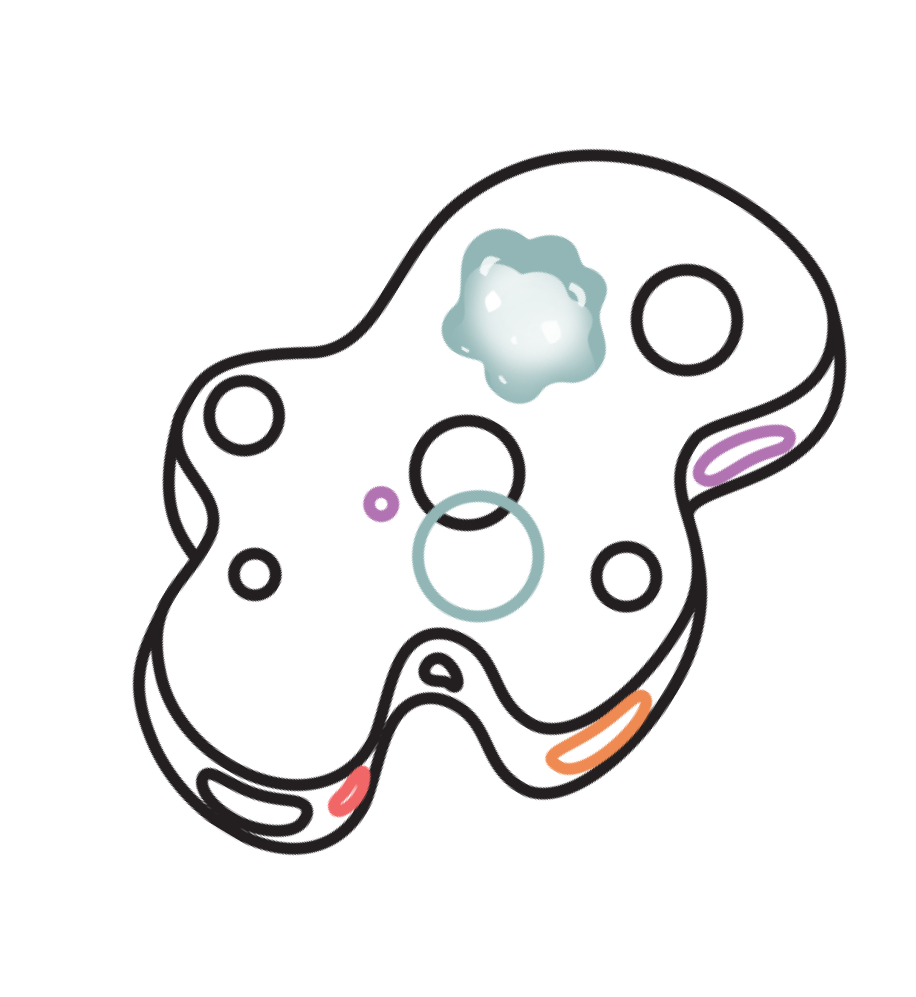Awakening
Awakening is to know what reality is not. It is the moment when we realize our perceived notion of reality may not be what reality actually is. In all cases, there is an instant of enlightenment. An “aha!” moment. The sensation you feel during this enlightenment is pretty ineffable. The closest experience that captures the sentiment is the feeling one gets after a good magic trick. It’s as if you became aware a veil was lifted.
For instance, which of these inner circles looks bigger?

Clearly, the one on the right does. The catch, which you may already have guessed, is both circles are the same size. Here, we get a glimpse into awakening. You see one thing; reality is another. The moment lasts only an instant, but its effects linger for an eternity.
Idea Space Refresher
Your idea space is the unique realm of your thoughts, emotions, sensations, and perceptions. Unlike physical space, it has no measurable size and remains hidden from the outside world. Only you can access and explore your own idea space.

Figure 2. Your idea space consists of your thoughts, emotions, sensations, and perceptions.
Even though each person's idea space remains hidden, our idea spaces can combine to create imagined realities that shape our world.
Personal vs Macro Idea Spaces
Your personal idea space is the one you're living in right now—all your individual thoughts, emotions, sensations, and perceptions. When personal idea spaces combine through written, verbal, or non-verbal communication, they create macro idea spaces. For example, when you have a conversation with a friend, your idea spaces merge to create a new shared reality based on both of your experiences. These macro idea spaces can scale in size and complexity to create the language we use, social norms, governments, laws, and scientific theories.

Figure 3. Personal vs Macro idea spaces.
Intersubjective Realities
Imagined realities are formed when a subjective idea is shared amongst a mass group of people, thereby creating an intersubjective reality. In a sense, an intersubjective reality is “real”, because enough people believe it to be “real”. If one person stops believing in the intersubjective reality, it still holds. For example, if one person stopped believing in the macro idea space of the “United States”, it would not crumble. It would take a majority of people to stop believing in the imagined reality for it to dissolve.

Figure 4. An intersubjective reality still exists even if one person stops believing in it.
Lindy Test
A macro idea space is an imagined reality, or an intersubjective reality, if it fails the Lindy Test, or the test of time. For example, a language is inherently not Lindy. Think of the hieroglyphics Egyptians used. At one point, hieroglyphics didn’t exist. Then, it existed. Now, it doesn't exist anymore. Hieroglyphics failed the test of time. Hieroglyphics are not Lindy proof. Other imagined realities, like English, the US Dollar, laws, and governments go through a similar evolution, thereby failing the Lindy Test.
Thus, a macro idea space is Lindy if it is good at not dying. As Nassim Taleb writes,
“That which is ‘Lindy’ is what ages in reverse, i.e., its life expectancy lengthens with time, conditional on survival… The longer an idea has been around without being falsified, the longer its future life expectancy.”
Therefore, only the nonperishable can be Lindy. A good, Lindy proof macro idea space is math. For example, \(1+1=2\) was true millions of years ago and will be true millions of years from today.
Guessing Game
Let's play a guessing game. Can you determine which of the following items are intersubjective realities or objective realities?
- words and languages
- money
- governments
- companies
- laws
- scientific theories
- mathematics
Ready? Let's see how you did.
Words and languages are not Lindy proof. Fictitious languages didn't exist until the cognitive revolution around 70,000 years ago, and they continue to evolve and change over time.
Similarly, money has undergone significant changes throughout history, from shells and barley to coinage and paper notes to digital currency, making it an intersubjective reality rather than an objective reality.
Governments rise and fall, making them perishable and not Lindy proof. For example, the Roman Empire was once a great superpower but is now a thing of the past.
Companies also do not pass the Lindy test. For instance, has Amazon always been around? No. For another example, think of Lehman Brothers. They came, they saw, they vanished.
Laws change all the time. For instance, in 1,776 B.C., the law of the land in some parts of the world was the Code of Hammurabi. Today, for us, it is the Declaration of Independence. Both set of values are completely different, yet both documents dictate laws for the people under rule to follow. Clearly, laws are not Lindy.
Scientific theories surprisingly do not pass the Lindy Test as well. This item is discussed in more detail in the book, but the basic idea revolves around the question: Did gravity exist before Isaac Newton introduced it? Think about it for a second. Then, you'll come to the only plausible answer: no. Scientific theories are always changing. As physicist David Griffiths writes,
“It is entirely possible that future generations will look back, from the vantage point of a more sophisticated theory, and wonder how we could have been so gullible.”
For example, at one point, the Greeks thought an atom was a tiny particle. Then, physicist Ernest Rutherford developed a model where particles "orbit" a nucleus. Then, the quantum revolution took over and we believed the nucleus consisted of neutrons & protons and the electron acts more as a “cloud”, where it’s impossible to pinpoint its exact location.

Figure 5. Evolution of the atom.
Mathematics is the only Lindy proof idea because what was true in math yesterday will be true tomorrow. Mathematical concepts such as addition and subtraction are not subject to change or revision based on cultural or historical shifts.
Reality
The point of awakening is to see beyond our imagined realities and to focus on objective realities. However, it's important to acknowledge that imagined realities are important for the growth of our species and should not be dismissed entirely. But if we never take the time to step back and notice these imagined realities, we may become domesticated by them, causing inner turmoil and suffering.
To combat this, we should focus our awareness on the objective realities of the world, such as nature, people, and health. Instead of immediately categorizing and defining an object, we should simply observe it for what it is. There's no need to put everything into words, just notice.
From this point of view, we may realize that when we strip away everything we think is real, there's still an infinite vastness left over, present in the here and now. That is reality.
TL;DR
Awakening is to know what reality is not. Personal idea spaces can combine to form macro idea spaces. These macro idea spaces are responsible for building the intersubjective realities of our world, like words, money, and laws. By understanding the power of imagined realities, we can better appreciate the subjective nature of our experiences and the shared realities we create. We can also question the validity of our beliefs and the sources of our knowledge, and strive to seek truth beyond the confines of our personal idea spaces.
















